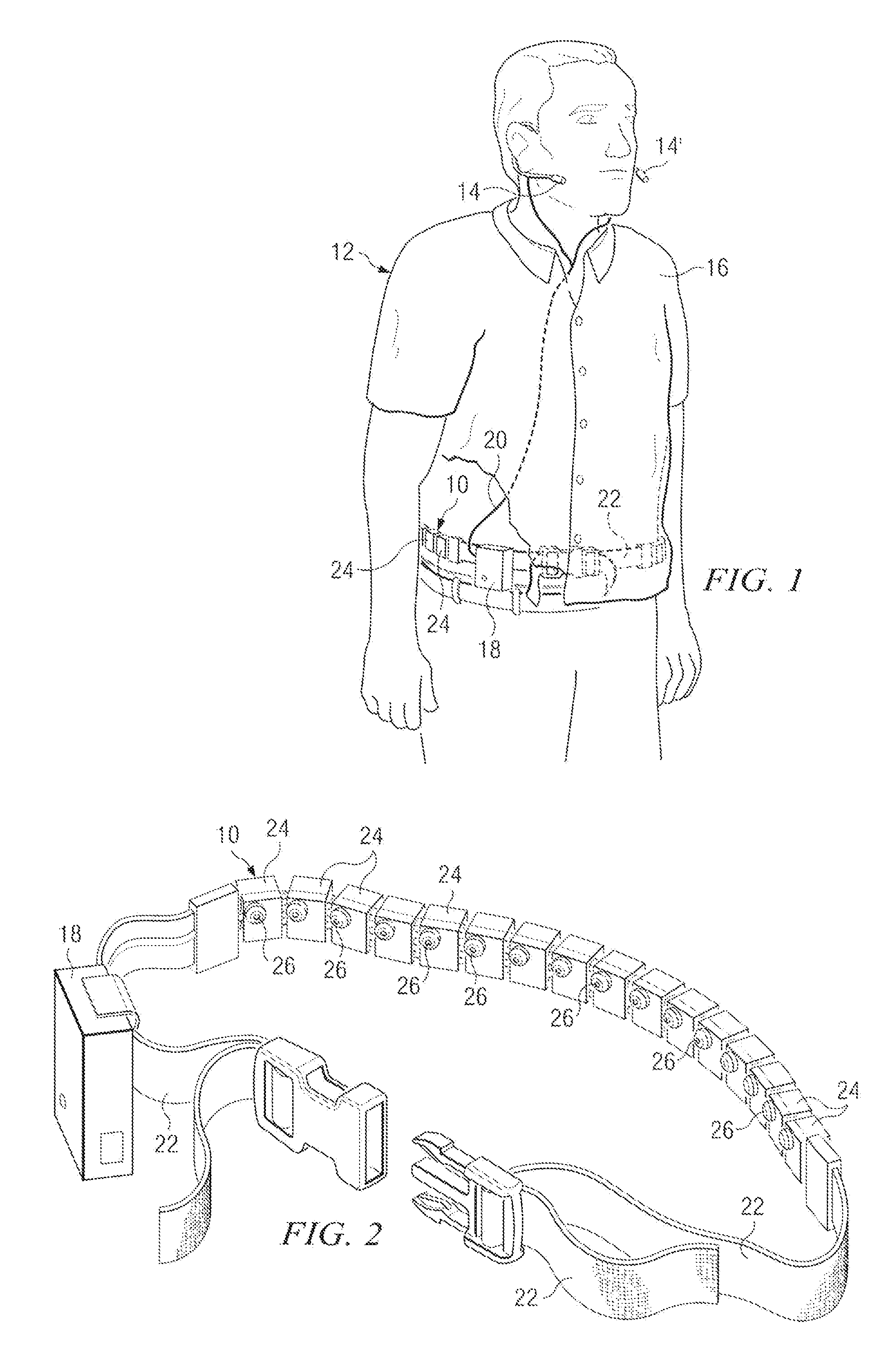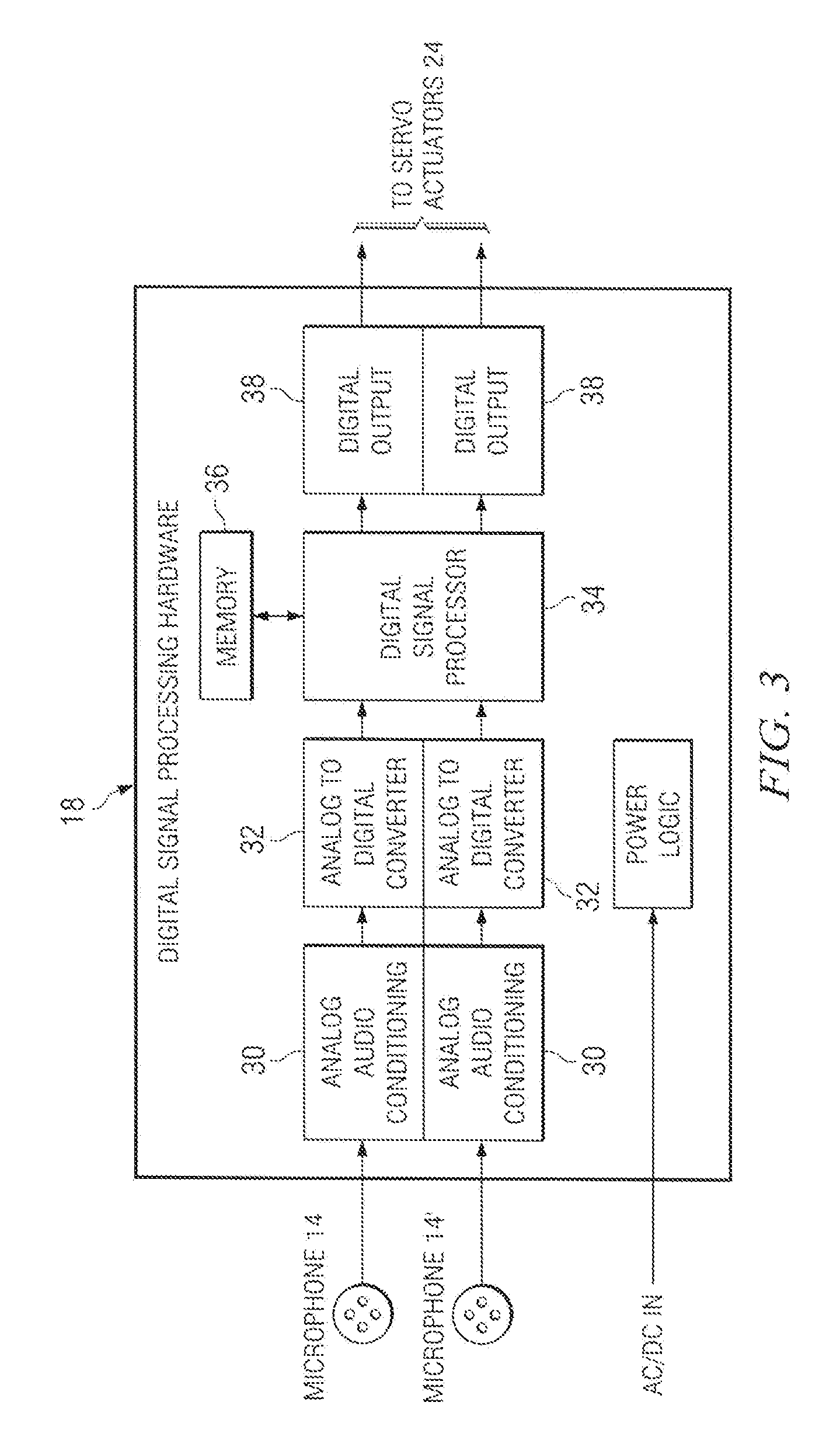Electro-mechanical systems for enabling the hearing impaired and the visually impaired
a technology of electromechanical systems and visual impairments, applied in the field of electromechanical systems, can solve the problems of providing no assistance to persons that are either totally deaf or very near, and providing no relief to persons that are totally blind or near
- Summary
- Abstract
- Description
- Claims
- Application Information
AI Technical Summary
Benefits of technology
Problems solved by technology
Method used
Image
Examples
first embodiment
[0013] Referring to FIGS. 1, 2, and 3, there is shown an electromechanical system for aiding the hearing impaired 10 comprising the invention. As used herein, the phrase “hearing impaired person” means a person that is either deaf or nearly so.
[0014] Referring particularly to FIG. 1, a hearing impaired person 12 is provided with at least one microphone 14 which is preferably positioned as closely as possible to an ear of the person 12 in the manner shown in FIG. 1. Alternatively, the microphone 14 can be mounted on a shirt 16 or other garment extending across the upper body of the person 12.
[0015] Regardless of where it is located, the microphone 14 is electrically connected to electric circuitry mounted within a box 18 by a cable 20. The box 18 is supported on a belt 22 extending around the waist of the person 12 and contains both the power supply for and the operating circuitry of the system 10.
[0016] Referring to FIG. 2, the belt 22 also supports a plurality of servo actuators ...
second embodiment
[0025] Referring to FIG. 4, there is shown an electromechanical system for aiding the visually impaired 50 comprising the invention. As used herein, the phrase “visually impaired person” means a person that is either blind or nearly so.
[0026] A visually impaired person 52 is provided with a pair of optical sensors, i.e., cameras 54 which are located as closely as possible to the eyes of the visually impaired person 52 in the manner illustrated in FIG. 4. The optical sensors 54 are connected through leads 56 to electronic circuitry that is similar in construction and function to the circuitry illustrated in FIG. 3 and described hereinabove in conjunction therewith. The electronic circuitry produces outputs which actuate a plurality of servo actuators 58 which are substantially identical in construction and function to the servo actuators 24 of the system 10 as illustrated in FIG. 4 and described hereinabove in conjunction therewith.
[0027] The servo actuators 58 of the system 50 are ...
PUM
 Login to View More
Login to View More Abstract
Description
Claims
Application Information
 Login to View More
Login to View More - R&D
- Intellectual Property
- Life Sciences
- Materials
- Tech Scout
- Unparalleled Data Quality
- Higher Quality Content
- 60% Fewer Hallucinations
Browse by: Latest US Patents, China's latest patents, Technical Efficacy Thesaurus, Application Domain, Technology Topic, Popular Technical Reports.
© 2025 PatSnap. All rights reserved.Legal|Privacy policy|Modern Slavery Act Transparency Statement|Sitemap|About US| Contact US: help@patsnap.com



